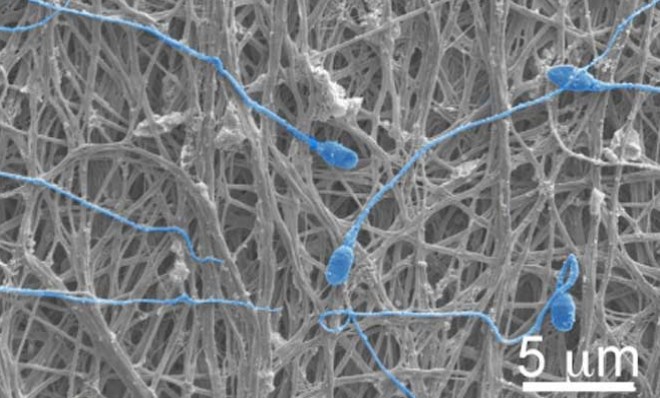What the condom of the future might look like
Not much has changed since the latex condom was first introduced in 1880. Now, researchers are trying to bring the contraceptive into the 21st century

The exact origin of the condom is a subject of debate, but many believe a rough form of the contraceptive came into use sometime around 1000 B.C. Images from the period show ancient Egyptian men wrapping their penises in linen sheaths, which in the 1500s were found to be useful in preventing pregnancy and blocking infection. That discovery eventually led to the first mass-produced condom in 1844, which was made of vulcanized rubber, a substance more familiarly used these days in car tires and hockey pucks. In a giant step for the comfort of mankind, the first latex condom was introduced in 1880.
Aside from a few incremental innovations — and countless gimmicks — condom technology has more or less remained unchanged for more than a century. Which isn't to say research isn't being poured into developing a better condom. It is currently the only contraceptive that simultaneously prevents pregnancy and the transmission of diseases like HIV, and health experts say improvements on the condom could have important public health benefits.
In 2008, TIME highlighted the work of German inventor Jan Vinzenz Krause, who is developing a spray-on latex condom for men. "The condom fits 100 percent perfectly," Krause told TIME, "so the safety is much higher than a standard condom's, and it feels more natural." The only problem is that once it's sprayed, the latex takes time to dry. For people to buy the product, it would have to be ready to use almost instantly.
The Week
Escape your echo chamber. Get the facts behind the news, plus analysis from multiple perspectives.

Sign up for The Week's Free Newsletters
From our morning news briefing to a weekly Good News Newsletter, get the best of The Week delivered directly to your inbox.
From our morning news briefing to a weekly Good News Newsletter, get the best of The Week delivered directly to your inbox.
In October of this year, the Bill & Melinda Gates Foundation awarded University of Washington researchers almost $1 million to pursue a new female condom made from a futuristic fabric that's electrically spun from tiny, nanometer-sized fibers. This weaving process allows the condom's fabric to do a number of things traditional latex can't, such as delivering anti-viral drugs, releasing chemical contraceptives into the bloodstream (just like the birth control patch), or even dissolving after a few days of wear.
Hannah Hickey at the University of Washington explains how the spinning process works:
Electrospinning uses an electric field to catapult a charged fluid jet through air to create very fine, nanometer-scale fibers. The fibers can be manipulated to control the material's solubility, strength, and even geometry. Because of this versatility, fibers may be better at delivering medicine than existing technologies such as gels, tablets, or pills. No high temperatures are involved, so the method is suitable for heat-sensitive molecules.
In theory, an electrospun condom could be discreetly inserted into the vagina for a woman to wear. Once inserted, it would not only physically block sperm from entering the uterus, but it could time-release a potent cocktail of anti-HIV drugs and hormonal contraceptives. The woman wouldn't have to worry about removing it, because the fibers of the condom would dissolve into the bloodstream after a few days. Then a new condom can be inserted.
Such a condom could have a huge impact in areas like sub-Saharan Africa, where deaths from AIDS-related diseases claimed 1.2 million lives in 2011, according to the latest UNAIDS report. It would also be welcome hanging next to Trojan packs in the U.S., which has the highest teen birthrate among developed countries.
A free daily email with the biggest news stories of the day – and the best features from TheWeek.com
-
 ‘Stakeknife’: MI5’s man inside the IRA
‘Stakeknife’: MI5’s man inside the IRAThe Explainer Freddie Scappaticci, implicated in 14 murders and 15 abductions during the Troubles, ‘probably cost more lives than he saved’, investigation claims
-
 The UK’s best Christmas pantos
The UK’s best Christmas pantosThe Week Recommends Dive into the festive cheer, even into the new year, with some traditional favourites and modern twists
-
 The longevity economy is booming as people live longer
The longevity economy is booming as people live longerThe Explainer The sector is projected to reach $27 trillion by 2030